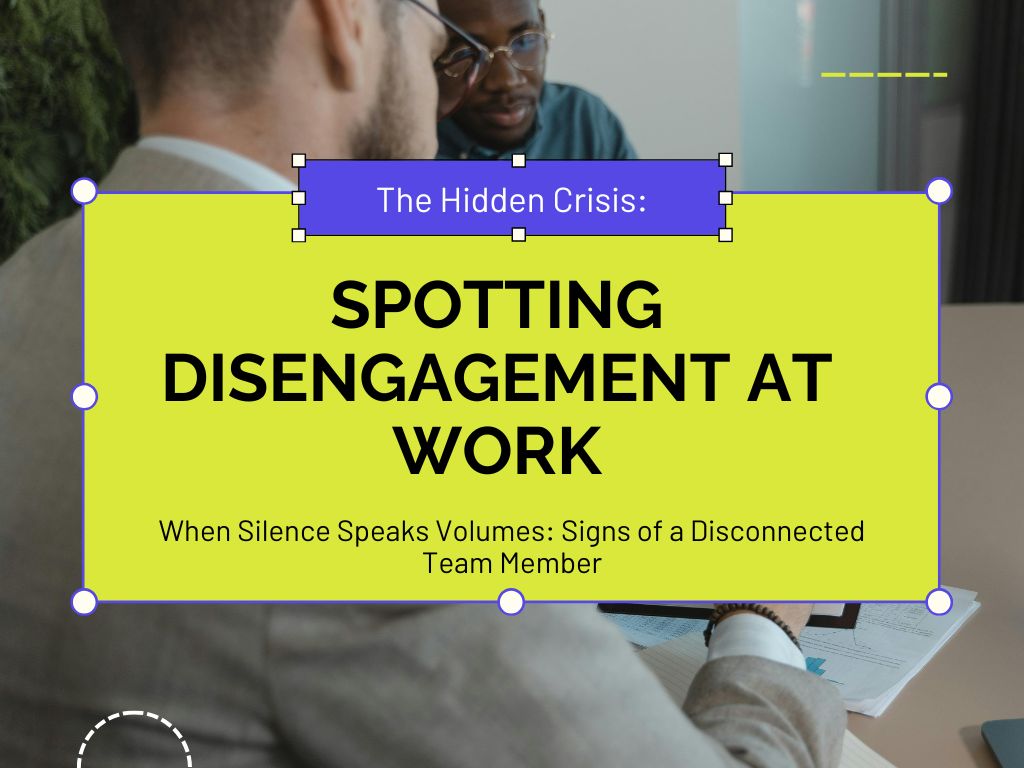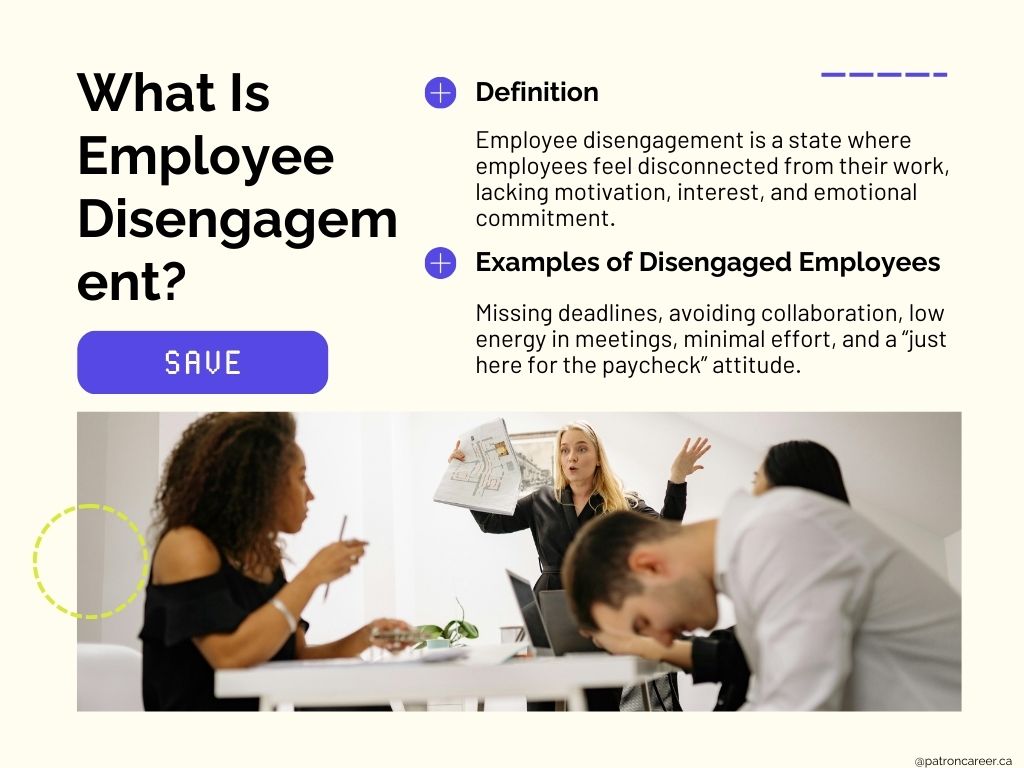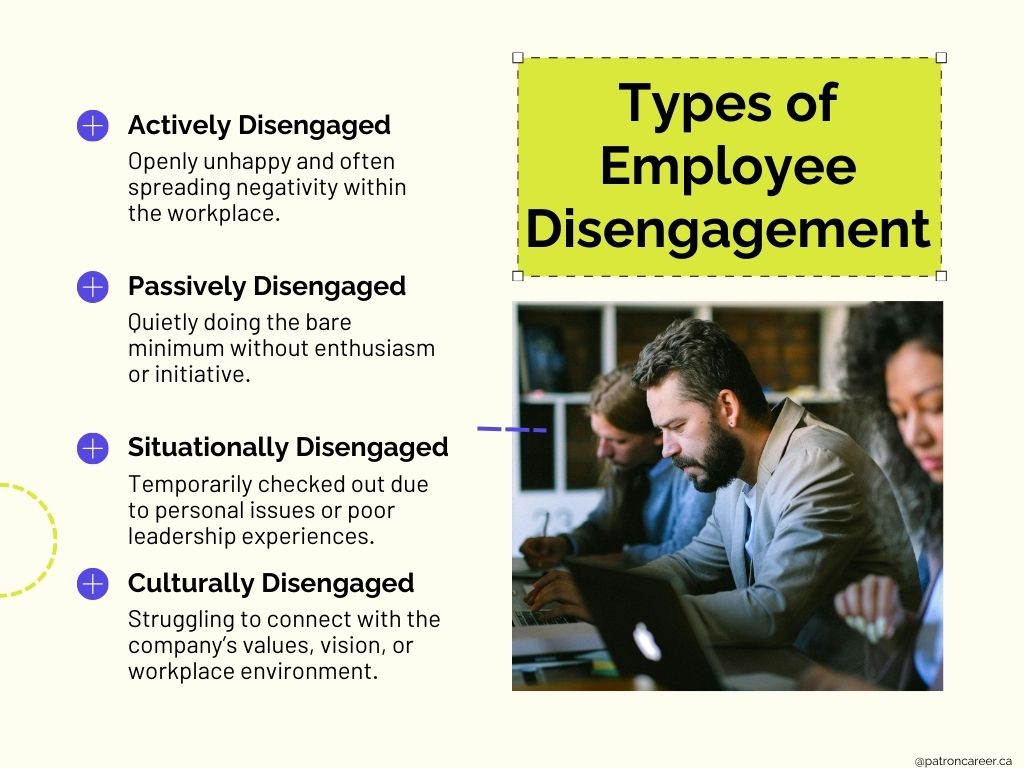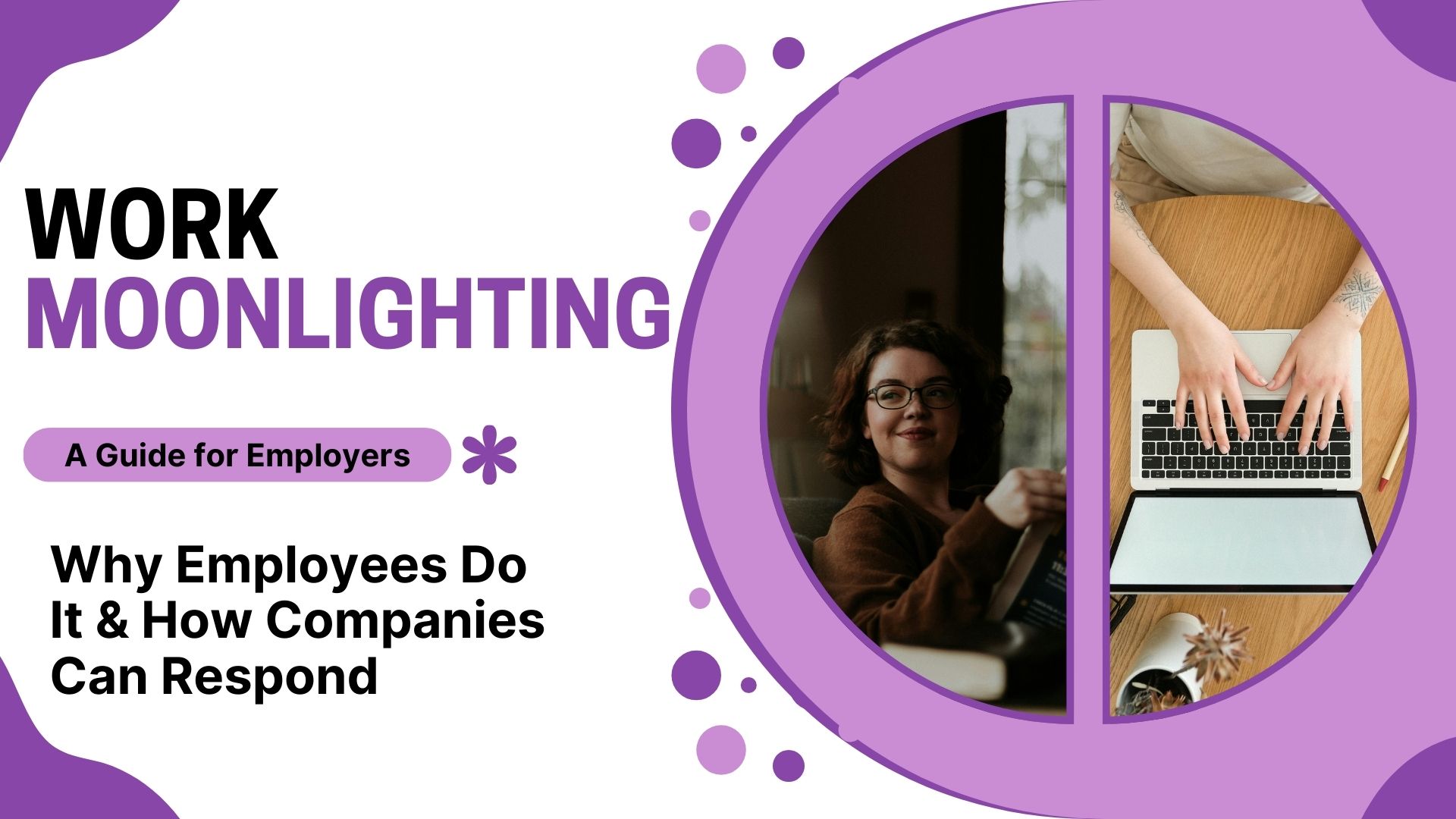The Silent Warning Signs: Is Your Employee Disengaged?
Employee engagement is what keeps a company thriving and flourishing. Organizations worldwide often neglect the elephant in the room: the issue of employee disengagement. Keeping employees motivated and engaged is no longer a nice-to-have but a business essential. Many telltale signs indicate that the spark is starting to fade and work is becoming irksome on most days. Disengagement is often subtle, slow-burning and can quietly spread across your organization like a virus. Recognizing disengagement early on is imperative to prevent it from taking a toll on morale, productivity, and your bottom line.
Read on in this blog as we delve into the enigma of employee disengagement and its impact on both your people and your processes. Additionally, we will talk about the warning signs to watch out for, and most importantly, how to re-ignite that flame.
What is Employee Disengagement?
Let’s start with the basics. Employee disengagement is a term that entails a psychological state where employees emotionally check out from their work. Their enthusiasm for work diminishes, leading them to have an apathetic attitude. Disengaged employees do show up at work, but emotionally and mentally, they are elsewhere.
These employees are not actively disrupting the work culture, but they certainly don't bring much value either. Unlike engaged employees, disengaged employees underperform and are rarely aligned with organizational goals.
Also Read: The 5 Cs of Employee Engagement
The Ripple Effect: Why Engagement Hurts the Workplace
Disengaged employees do not just affect their performance; rather, they create a ripple effect across teams and departments, lowering total output and bringing in a lack of innovation.
Let's acknowledge the impact of disengagement:
- Lower Productivity: Employees who are disengaged typically produce lower-quality work, miss deadlines, feel stuck in their careers and have low morale. Their absence, be it social or mental, takes a toll on team productivity.
- Higher Turnover Rates: Many organizations struggle with combating attrition. One of the reasons is employee disengagement. Retaining top talent becomes burdensome because engagement levels are low.
- Gloom-ridden Work Culture: Unlike engaged employees who keep the workplace positive and alive, disengaged employees have a counter- effect. One disengaged worker’s negativity spreads like wildfire and affects team morale, fostering a toxic work environment.
Employee disengagement can even cost organizations their brand image because frontline disengaged workers may potentially lower the overall customer experience.
What Causes Disengagement in The First Place?
Employee disengagement can be prevented if employers are aware of the root causes in the first place. Several common causes are:
1. Lack of Purpose or Meaning
Employees need to feel that what they're doing matters for the company. If they’re constantly engaged in mundane, irrelevant or disconnected tasks, their passion for work will eventually start to dwindle.
2. Poor Leadership
Good leaders produce good teams. Leadership is more than a mundane administrative routine. Managers who fail to foster motivation, accountability or support teams ultimately contribute to employee dissatisfaction and detachment.
3. Limited Growth Opportunities
When employees are not given learning and development opportunities, their morale starts to dwindle. Career progression is a major key to fostering engagement.
4. Unbalanced Workloads
If employees are overburdened with heavy workloads or, conversely, even a lack of challenging tasks makes them feel undervalued or burned out.
Top Signs of a Disengaged Employee
Keep an eye out for these signs and spot disengaged employees early on:
1. Drop in Performance
When a previously reliable employee begins missing deadlines, producing subpar work, or making careless errors, it’s a red flag worth investigating.
2. Lack of Participation
Disengaged employees avoid meetings, contribute less to group discussions, and often remain silent in brainstorming sessions.
3. Increased Absenteeism
Frequent sick days, late arrivals, or early departures can indicate a deeper issue, especially if this behavior is out of character.
4. Negative Attitude
Persistent pessimism, complaints, and criticism of company policies or leadership are strong indicators of mental disengagement.
5. Isolation from Colleagues
If someone who was once sociable becomes distant, disengagement may be the cause. Disengaged employees often withdraw from social interactions.
6. Disregard for Growth
Lack of enthusiasm for training, mentorship, or development opportunities suggests that the employee no longer envisions a future with the company.
7. Minimal Effort
When employees perform only the bare minimum to get by and avoid taking initiative, it often signals a lack of emotional investment in their roles.
How to Re-Engage Disengaged Employees
Don’t hit the panic button just yet. With the right strategies and mindset, you can breathe life back into disengaged team members.
1. Open Lines of Communication
Start with a one-on-one conversation. Approach it with compassion and curiosity. Ask how they’re feeling about their work and what support they need. Sometimes, all it takes is knowing someone is listening.
2. Offer Purpose and Clarity
Clearly communicate how their role contributes to the bigger picture. People thrive when they feel their work has meaning. According to Gallup reports, employees who strongly agree they can align their goals with organizational goals are 3.5 times more likely to be engaged.
3. Provide Growth and Learning Opportunities
One of the top ways to foster engagement in employees is through training, cross- functional projects, or new responsibilities. Investing in their career growth reignites a sense of purpose and ambition.
4. Recognize and Reward
Even a little appreciation goes a long way in maintaining a healthy work culture. Celebrate wins, no matter how big or small, and make recognition a part of your company culture.
Related: 7 surefire ways to build a culture of recognition and appreciation.
5. Reevaluate Workloads
Ensure tasks are fairly distributed and aligned with employees’ skills and interests. Having too much or too little responsibility can cause disconnection.
6. Encourage Work-Life Balance
In the pursuit of career progression, employees often suffer from burnout. Promote flexibility, wellness programs, and regular breaks to help employees recharge.
Related: Work-Life Balance: What It Is and How to Achieve It
Don’t Let Engagement Be an Afterthought, Start Taking Proactive Steps Today!
Employee engagement or disengagement is not an overnight phenomenon. It’s a challenging journey that requires ongoing effort, communication, and transparency. For employees whom you feel have gone astray, prioritize re-engagement to foster a productive workforce. Remember that your employees are your greatest asset. Understand their concerns and collaborate with them to cultivate an invested and highly engaged workforce.






